Ernst Münch was a German plant physiologist who proposed the Pressure Flow Hypothesis in 1930.

The Blessed Gamelbert was a Christian priest, who worked in the 8th century in the area of the present Deggendorf in Bavaria in Germany.
Alfred Karl Gabriel Jeremias was a German pastor, Assyriologist and an expert on the religions of the ancient Near East.
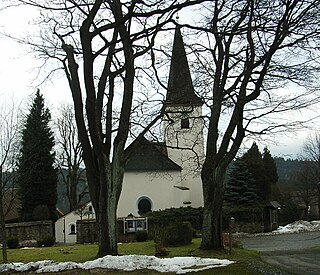
Stadlern is a municipality in the district of Schwandorf in Bavaria, Germany.
Imanuel Geiss was a German historian.

Marcus Junkelmann is a German historian and experimental archeologist.
The Gambling Research Center examines the various aspects of gaming and gambling through an interdisciplinary scientific approach. The goal of the Center is to systematically and scientifically examine the wide range of topics relating to gaming and gambling such as lotteries, sports betting, card games and gaming machines.

Johann Baptist Mehler was a German Catholic priest, prelate, and religious writer of the Roman Catholic Diocese of Regensburg.
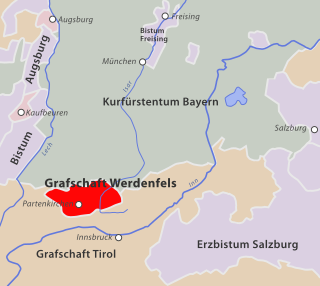
The County of Werdenfels in the present-day Werdenfelser Land in South Germany was a county that enjoyed imperial immediacy that belonged to the Bishopric of Freising from the late 13th century until the secularisation of the Bishopric in 1803.
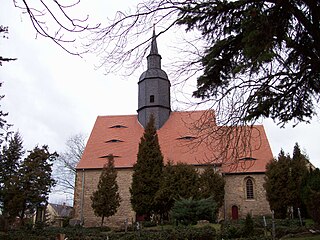
The Holy Way came about as a result of the canonization of Bishop Benno of Meissen. It led from Bohemia to Meissen and ran between Grillenburg and Wilsdruff in the present-day district of Sächsische Schweiz-Osterzgebirge in the opposite direction and parallel with the Saxon St. James' Way. Original sections of the route have survived, for example in the Tharandt Forest between Grillenburg and Spechtshausen.

Tragelhöchstädt is a village in the municipality of Uehlfeld in the district of Neustadt (Aisch)-Bad Windsheim in Bavaria in Germany.

Michael Matheus is a German historian.

Helmut Müller-Enbergs is a German political scientist who has written extensively on the Stasi and related aspects of the German Democratic Republic's history.
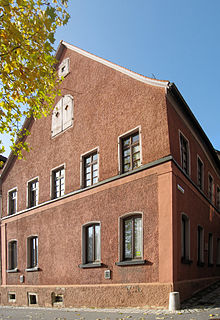
The old Rottweil Synagogue is a synagogue in Rottweil in Baden-Württemberg. It was established in 1861. The desecrated Synagogue is located in Kameralamtsgasse 6, former Judengasse, close to Kapellenkirche and next to Bischöfliches Konvikt and gymnasium. The construction of a new synagogue in Rottweil began in March 2016.

The Neckar-Odenwald Limes is a collective term for two, very different early sections of the Upper Germanic-Rhaetian Limes, a Roman defensive frontier line that may have been utilised during slightly different periods in history. The Neckar-Odenwald Limes consists of the northern Odenwald Limes (Odenwaldlimes), a cross-country limes with camps, watchtowers and palisades, which linked the River Main with the Neckar, and the adjoining southern Neckar Limes (Neckarlimes), which in earlier research was seen as a typical 'riverine limes', whereby the river replaced the function of the palisade as an approach obstacle. More recent research has thrown a different light on this way of viewing things that means may have to be relativized in future. The resulting research is ongoing.
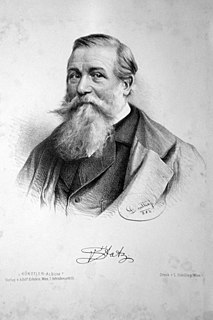
Vincenz Statz was a Neo-Gothic German architect, mainly active in the Rhineland.
The Battle of Remich was fought between Vikings and Frankish officials at Remich, Luxembourg, on April 11, 882. The Vikings were led by Godfrid and Sigfrid, while the Franks were led by Wala, the archbishop of Metz, Bertulf, the archbishop of Trier, and Adalhard, the Count of Metz. The battle was a victory for the Vikings, although they retreated after the battle. It marks the southernmost advance of the Vikings into the Rhineland.
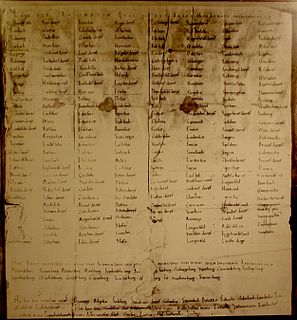
The Hersfeld Tithe Register is a list of the places and castles in the Friesenfeld Gau (territory) and in Hassegau, from which Hersfeld Abbey received tithes. The original document dates from between 881 and 887 or between 896 and 899, but no longer exists. The list is found in a transcript from the 11th Century, which is now in the Hessischen Staatsarchiv Marburg.
Tiburtius Tibor Kneif was a German-Hungarian lawyer and musicologist.

Carl Josef Thiel was a German organist, church musician and professor of music.



















